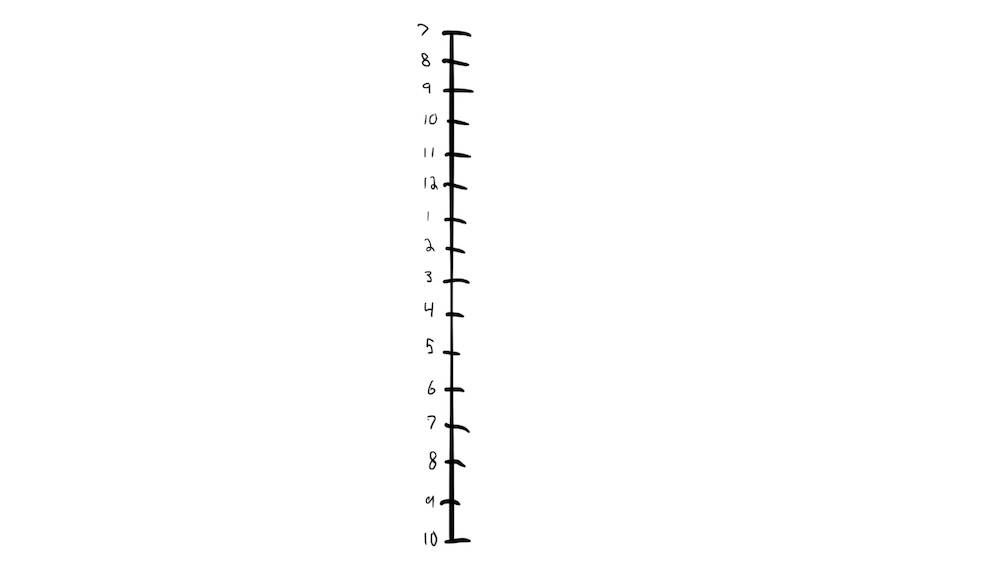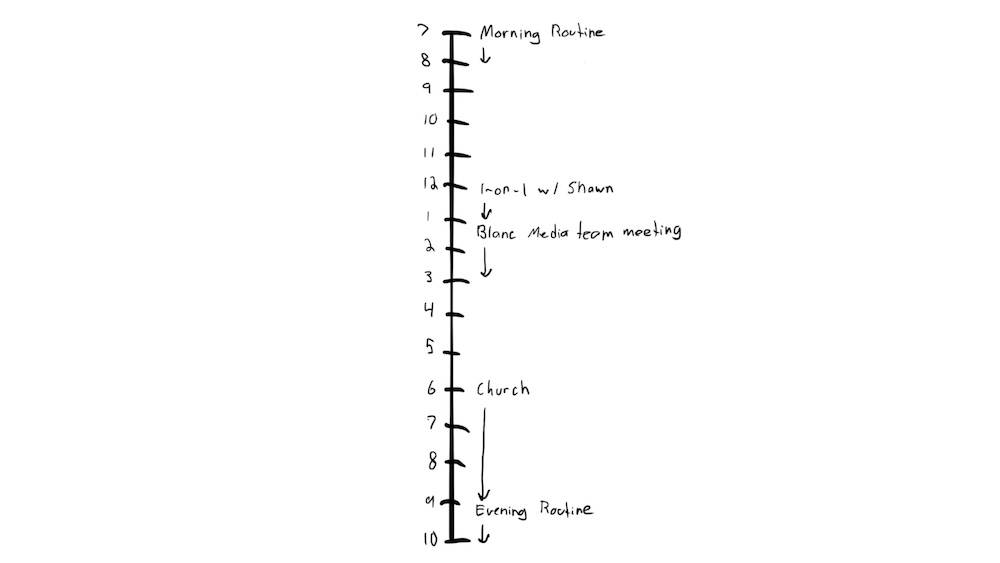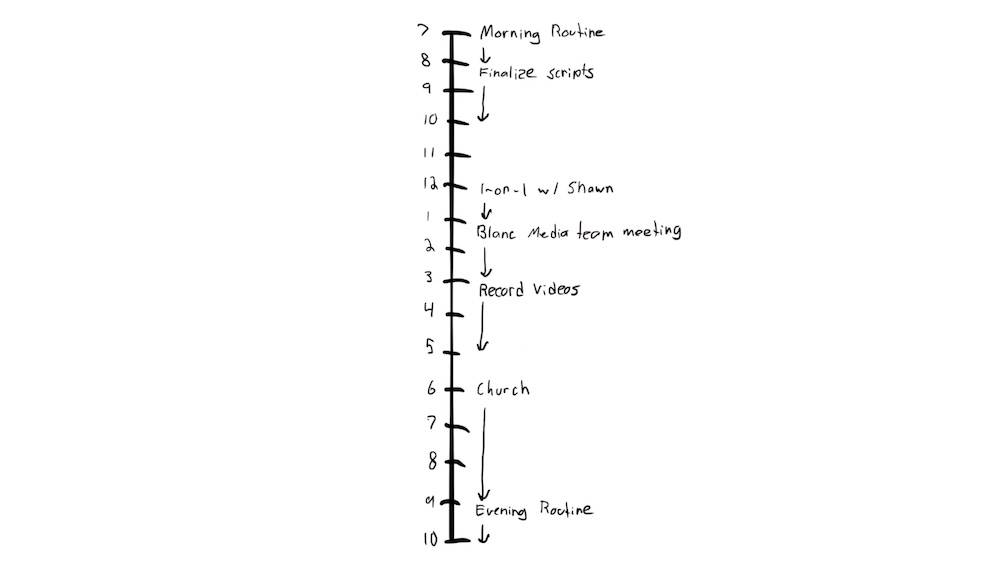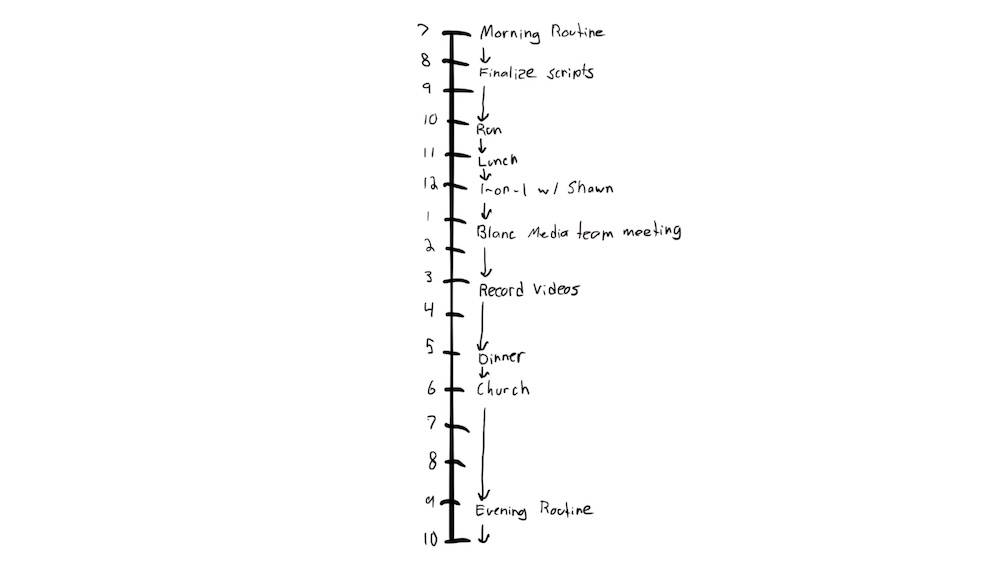Planning Your Day Using Time Blocking (VIDEO)
This is a video lesson from the Time Blocking module in our Simple Time Management course.
Downloads:
Timeblocking Cheatsheet (PDF) »
Daily planner template (PDF) »
In this video, we’re going to dive in and create a time blocked plan for our day. I’ll walk you through it by planning my day so you can see how we use all the principles we talked about in the last video, then you can try it out for yourself.
Before we begin, you may be wondering what you would want to time block instead of just working off of a todo list. While making lists can be helpful, todo lists have one major shortcoming – they don’t show you when you’re going to complete the task. Which is a problem, because everything that you need to do must be accomplished within the context of time. The time blocked schedule essentially takes the things you have to get done from your todo list and slot them onto your calendar, effectively solving this problem and helping you make the most of the 24 hours in your day.
The first thing you’ll need as you start time blocking is a canvas to work off of. You can either use a digital day view in a calendar program like Fantastical, or you could simply draw out a timeline from top to bottom on a page in your notebook. If you’re drawing it using analog tools, make sure to label each hour with enough room to write things easily in half-hour increments. Make sure your timeline goes from the time you wake up until the time you plan to go to bed.

Once you have your timeline, you’ll need to look at your calendar and block off the needed time for any appointments or meetings you have tomorrow. For example, I’ve got a 1-on-1 with Shawn at 12pm and our Blanc Media team meeting at 1pm. The 1-on-1 will probably last about an hour but I’ll block off the entire hour just in case, and the Blanc Media team meeting is usually about an hour and a half but I’ll block off two hours for that. I like to use conservative estimates like this for meetings so that if I get done a little early I can work on something else or not feel guilty about taking a little break. I’ve also got midweek church service at 6pm, so I’ll put that on here for roughly 3 hours with travel time and music practice before the actual service.

Now that I’ve got all my appointments and meetings for the day on my calendar, next I will block off time for the things I want to get done. To start, I’ll make a list of up to 5 things that I consider my most important tasks for the day. Today I have two meetings, and I also want to work on finishing these scripts and then record these videos. The meetings are already on my timeline, so I’ll put the scripts and video recording on my timeline next to block off time to get these things done. I’ll work on finalizing the scripts first thing in the morning, so after I block off time for my morning routine from 7 to 8, I’ll block off 2 hours from 8 to 10 to finish that task. I already have meetings from 12-3pm but I prefer to record audio in the afternoon, so I’ll record the videos from 3-5pm. That leaves me an hour from 5 to 6 to have dinner with my family before church. Keep in mind that the order that you put these tasks on your timeline matters here. You should always try to put your most important tasks on your timeline first. That way, you make sure you have time budgeted for the things that are really important and it’s the less important or meaningless stuff that falls through the cracks. But without an intentional plan, it could easily be the meaningless stuff that dominates your day while the important stuff gets neglected.

I still have some time from 10 to 12, so I’ll block off time from 10 to 11 to go for a run and 11 to 12 to eat lunch and get ready for my afternoon meetings. Lastly, I’ll block off an hour from 9 to 10 pm for my evening routine. My day at this point is pretty full, so I’m not going to add anything else to my list of tasks. If I do end up getting everything done before the end of my workday at 5pm, I can always go back to my task manager and grab something else to work on or check-in with the rest of the team on Basecamp and see if anyone needs help with anything. But it’s important that I set myself up for success by keeping my list of tasks manageable, which is why even if I don’t have any meetings I limit the number of sizable tasks I try to get done in a day to 5. This doesn’t include things like checking my email, which I usually find I can squeeze in whenever I find that I finish things ahead of schedule.

So that’s it! That’s how I time block my day. Now go ahead and try to time block your day for tomorrow. Just like this example, it doesn’t have to take a long time or be a perfect representation of how your day is actually going to go. It just needs to be realistic and provide some structure. With a time blocked plan for your day, you can apply intentionality to your time tomorrow without having to wonder if what you’re doing at any given moment is actually the right thing to be doing.
Free Webinar: Time Budgeting
WHAT: Shawn Blanc & Mike Schmitz will be sharing 3 strategies to make your day flow better while giving you the time you need for your best work. Learn to beat procrastination, take back control of your calendar, and get clear on how to invest your time instead of wondering where it went.
HOW LONG: About 1 hour (including time for Q & A)
